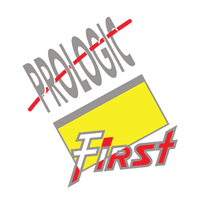Description

SabeeApp

SymphonyHMS
Comprehensive Overview: SabeeApp vs SymphonyHMS
SabeeApp
a) Primary Functions and Target Markets
SabeeApp is a cloud-based hotel management software solution designed for small to medium-sized hospitality businesses, such as boutique hotels, hostels, guest houses, and apartment rentals. Its primary functions include:
- Reservation management: Streamlining booking processes from various channels.
- Channel management: Integrating with travel agencies like Booking.com, Airbnb, and Expedia to manage availability and pricing across platforms.
- Front-desk operations: Facilitating check-in/check-out, room allocation, and guest service management.
- Billing and invoicing: Automating the billing process and providing easy payment options.
- Reporting and analytics: Generating detailed reports on sales, occupancy rates, and financial performance.
b) Market Share and User Base
SabeeApp targets a niche market of small to medium-sized hotel operators, which places it in a smaller segment compared to larger players targeting massive hotel chains. While specific market share data might not be publicly detailed, SabeeApp is known to have a moderate but growing user base, often preferred by independent and budget-conscious hoteliers seeking a robust yet simple solution.
c) Key Differentiating Factors
- Simplicity and Ease of Use: SabeeApp is highly lauded for its user-friendly interface, which requires minimal training.
- Affordability: Its pricing is competitive enough to be attractive to small-scale operators.
- Focus on Small Properties: Unlike some competitors, SabeeApp is optimized for smaller properties without unnecessary complexity.
SymphonyHMS
a) Primary Functions and Target Markets
SymphonyHMS (Hospitality Management System) is another cloud-based software intended to serve a wide range of hospitality operations, including hotels, resorts, and serviced apartments. Its primary functions include:
- Comprehensive Property Management: Covering reservations, housekeeping, maintenance, and guest relations.
- Revenue Management: Offering dynamic pricing strategies to optimize earnings.
- Customer Relationship Management (CRM): Managing customer profiles and loyalty programs.
- Event Management: Supporting banquet and conference services.
- Advanced Reporting: Providing in-depth analytics for performance assessment and forecasting.
SymphonyHMS generally targets larger-scale hospitality businesses compared to SabeeApp.
b) Market Share and User Base
SymphonyHMS typically serves a larger market share due to its more extensive suite of tools suitable for hotel chains and resorts, offering solutions for properties with hundreds of rooms. Its user base includes more significant establishments that require advanced management features and higher scalability.
c) Key Differentiating Factors
- Scalability: Capable of managing extensive operations with numerous rooms and complex needs.
- Advanced Revenue and Event Management: More in-depth tools for dynamic pricing and event organization.
- Integration Capabilities: Stronger emphasis on integrations with larger enterprise systems, allowing for unified operations across numerous properties.
Comparison
- Target Market Size: SabeeApp appeals to smaller, independent hotels, whereas SymphonyHMS targets larger operations with robust needs.
- Functionality: SymphonyHMS offers a broader range of capabilities suited for larger establishments, while SabeeApp simplifies processes to fit smaller scales.
- Ease of Use vs. Complexity: SabeeApp focuses on simplicity, making it easier for smaller properties without dedicated IT departments, while SymphonyHMS offers more complex functionalities to handle multi-faceted operations.
- Cost: SabeeApp typically comes at a lower price point, ideal for budget-conscious smaller businesses, whereas SymphonyHMS may require a more significant investment suitable for larger enterprises seeking extensive features.
In summary, the choice between SabeeApp and SymphonyHMS often comes down to the scale and specific needs of the hospitality operation, with SabeeApp serving smaller, less complex businesses and SymphonyHMS providing solutions for larger, more demanding environments.
Contact Info

Year founded :
2013
Not Available
Not Available
Hungary
Not Available

Year founded :
Not Available
Not Available
Not Available
India
Not Available
Feature Similarity Breakdown: SabeeApp, SymphonyHMS
As of my last update, SabeeApp and SymphonyHMS are both hospitality management solutions designed to streamline and enhance hotel operations. Let's break down their feature similarities and differences based on the core criteria you provided:
a) Core Features in Common
-
Reservation Management
- Both platforms offer systems for managing reservations, including booking, modifying, and canceling reservations. They also support multiple distribution channels to increase occupancy.
-
Front Desk Operations
- Both solutions facilitate front desk operations such as check-in, check-out, and room allocation to enhance guest experience and operational efficiency.
-
Channel Management
- Integration with multiple online travel agencies (OTAs) and booking platforms is a common feature, allowing real-time price updates and inventory synchronization.
-
Housekeeping Management
- Tools for scheduling, tracking, and managing housekeeping tasks are integrated into both systems to ensure cleanliness and room readiness.
-
Reporting and Analytics
- Comprehensive reporting and analytics features assist in business decision-making by providing insights into occupancy rates, revenue, and other key performance indicators.
-
Billing and Invoicing
- Facilities for managing billing, invoicing, and payments are available, aiding in financial management and guest billing processes.
b) User Interface Comparison
-
SabeeApp:
- SabeeApp typically focuses on user-friendliness with a clean, intuitive design. It aims to minimize complexity for users by offering straightforward navigation and a visually appealing layout. This simplicity can enhance productivity, especially for smaller establishments or those without dedicated IT staff.
-
SymphonyHMS:
- SymphonyHMS often leans toward providing a more robust and comprehensive interface, which might appear more detailed due to its focus on integrating various hotel operations into a single system. This can be advantageous for larger hotels with diverse needs, though it may present a steeper learning curve for new users.
c) Unique Features
-
SabeeApp:
- Mobile-Friendly Operations: A strong emphasis on mobile accessibility, allowing hotel managers to oversee operations on the go, is a notable feature of SabeeApp.
- Guest Engagement Tools: It often includes tools for enhancing direct communication with guests, such as pre-arrival emails and feedback requests.
-
SymphonyHMS:
- Comprehensive Back-Office Management: Offers deeper integration into back-end operations like accounting and inventory, appealing to larger operations needing end-to-end management.
- HR and Payroll Management: Dedicated modules for employee management and payroll processing, which can be beneficial for medium to large-sized hotels.
By comparing these aspects, users can better understand which system aligns with their operational priorities and business scale, ensuring they choose a product that meets their specific needs in hospitality management.
Features

Not Available

Not Available
Best Fit Use Cases: SabeeApp, SymphonyHMS
When evaluating SabeeApp and SymphonyHMS, it’s essential to understand the context in which each product excels. Both cater to the hospitality sector but have distinct strengths and best-fit use cases.
SabeeApp
a) Best Fit Use Cases for SabeeApp
- Small to Medium-Sized Hotels: SabeeApp is ideal for independent hotels and small to medium-sized hotel chains looking for an intuitive, all-in-one property management system (PMS). It streamlines operations such as booking management, invoicing, and housekeeping.
- Boutique Establishments: Boutique hotels, hostels, and guesthouses can benefit from SabeeApp's user-friendly interface and integrated channel manager, which allows them to manage bookings across multiple online travel agencies (OTAs).
- Properties Seeking Cloud-Based Solutions: Businesses that prioritize flexibility and the ability to access their system from anywhere with internet connectivity appreciate SabeeApp's cloud-based functionality.
- Budget-Conscious Operations: Hotels with limited IT budgets will find SabeeApp cost-effective, as it provides essential PMS features without the need for substantial upfront investments.
SymphonyHMS
b) Preferred Use Cases for SymphonyHMS
- Large Hotels and Resorts: SymphonyHMS is tailored for large hotels, resorts, and chains that require robust PMS with comprehensive functionalities, including banquet management, food and beverage management, and more.
- Integrated Hospitality Operations: Establishments like resorts or large hotels that offer a variety of services and need to integrate these into a cohesive system benefit from SymphonyHMS's extensive modular capabilities.
- High Volume Properties: Hotels and resorts with high-volume bookings and diverse revenue centers prefer SymphonyHMS for its ability to handle complex operations and data-heavy environments reliably.
- Businesses Needing Customization: Enterprises that seek highly customized solutions to meet specific operational requirements will find SymphonyHMS's flexibility and scalability advantageous.
Industry Vertical and Company Size Catering
SabeeApp
- Industry Vertical: Primarily suited for the hospitality sector focusing on small to medium-sized establishments. Its straightforward approach and cloud-based technology make it attractive to smaller operators looking to modernize their booking and property management processes.
- Company Size: SabeeApp caters primarily to small to medium-sized companies; its features provide a balance between comprehensive functionality and ease of use, without the complexity that may be required by very large operations.
SymphonyHMS
- Industry Vertical: Also focused on the hospitality industry, SymphonyHMS is adaptable for diverse hospitality services ranging from hotels and resorts to conference centers. Its robust system is designed to integrate various aspects of hospitality operations.
- Company Size: SymphonyHMS is more suited for medium to large-sized hospitality businesses, including hotel chains that require advanced features and infrastructure to manage multiple properties and departments efficiently.
In summary, SabeeApp and SymphonyHMS serve different niches within the hospitality industry. SabeeApp is ideal for smaller hotels seeking simplicity and cost-efficiency, while SymphonyHMS is more appropriate for larger establishments that need customizable solutions to handle complex, multi-department operations.
Pricing

Pricing Not Available

Pricing Not Available
Metrics History
Metrics History
Comparing undefined across companies
Conclusion & Final Verdict: SabeeApp vs SymphonyHMS
To determine which software solution offers the best overall value between SabeeApp and SymphonyHMS, it's essential to analyze their features, pricing, user experience, customer support, scalability, and integration capabilities.
Conclusion and Final Verdict:
a) Best Overall Value:
When considering best overall value, we have to weigh multiple factors such as price, features, user-friendliness, and support. SabeeApp is known for its user-friendly interface and robust feature set tailored for small to mid-sized hospitality businesses. SymphonyHMS, on the other hand, offers more comprehensive solutions which may be more suitable for larger establishments that require extensive integration and customization.
- SabeeApp: Likely to provide the best value for small to medium-sized hotels and guesthouses due to its simplicity, cost-effectiveness, and ease of use.
- SymphonyHMS: Offers better overall value for larger hotels or chains that require extensive features, integrations, and scalability.
b) Pros and Cons:
SabeeApp:
-
Pros:
- Easy-to-use interface that requires minimal training.
- Suitable for smaller businesses with straightforward operations.
- Cost-effective pricing plans.
- Offers essential features such as booking management, invoicing, and third-party integrations.
-
Cons:
- Limited scalability for larger enterprises.
- May lack some advanced features required by bigger hotels.
- Integration with external systems might be limited compared to more robust solutions.
SymphonyHMS:
-
Pros:
- Extensive range of features catering to large hotels and chains.
- Highly customizable with numerous integration capabilities.
- Can handle complex hospitality operations with ease.
- Robust customer support and training resources.
-
Cons:
- Steeper learning curve due to complexity.
- Higher cost, which might not be justified for smaller businesses.
- Implementation might take longer because of the comprehensive setup process.
c) Recommendations:
For users trying to decide between SabeeApp and SymphonyHMS, consider the following recommendations:
-
Size and Needs: Evaluate the size of your hotel and your specific needs. If you are a small to medium establishment with straightforward requirements, SabeeApp might be more suitable. For larger operations with complex needs, SymphonyHMS could be a better fit.
-
Budget: Consider your budget constraints. SabeeApp may offer more affordable pricing structures, whereas SymphonyHMS might require a higher investment, justified by the advanced features and scalability.
-
Feature Requirements: Make a list of must-have features for your business. Match them against what each software offers to ensure that your critical needs are met.
-
Future Growth: Consider your future expansion plans. If you anticipate scaling your business significantly, investing in a more scalable solution like SymphonyHMS might save time and resources in the long run.
-
Trial and Support: Take advantage of any free trials or demos offered by both platforms to get a feel for the interface and functionalities. Additionally, assess the quality of customer support as it can be pivotal for smooth operations.
By analyzing these factors, hospitality businesses can make a more informed decision on which platform aligns best with their operational goals and vision.
Add to compare
Add similar companies



